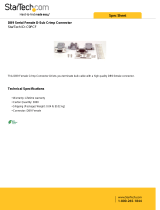Table of Contents
SECTION I - GENERAL INFORMATION ...................................................................... 1-1
1.1 INTRODUCTION ............................................................................................................. 1-1
1.2 SCOPE ................................................................................................................................ 1-1
1.3 EQUIPMENT DESCRIPTION ........................................................................................ 1-1
1.4 APPROVAL BASIS – FAA-TSO ..................................................................................... 1-1
1.5 SPECIFICATIONS ........................................................................................................... 1-2
1.6 EQUIPMENT SUPPLIED ................................................................................................ 1-2
1.7 EQUIPMENT REQUIRED BUT NOT SUPPLIED ....................................................... 1-3
1.8 LICENSE REQUIREMENTS .......................................................................................... 1-3
SECTION II - INSTALLATION......................................................................................... 2-1
2.1 GENERAL INFORMATION ........................................................................................... 2-1
2.1.1 SCOPE .............................................................................................................................. 2-1
2.1.2 CERTIFICATION REQUIREMENTS ...................................................................................... 2-1
2.2 UNPACKING AND PRELIMINARY INSPECTION .................................................................. 2-1
2.3 EQUIPMENT INSTALLATION PROCEDURES....................................................................... 2-2
2.3.1 COOLING REQUIREMENTS ................................................................................................ 2-2
2.3.2 MOUNTING REQUIREMENTS ............................................................................................. 2-2
2.3.3 CONNECTOR ASSEMBLY ................................................................................................... 2-2
2.4 CABLE HARNESS WIRING .................................................................................................. 2-2
2.4.1 NOISE ................................................................................................................................ 2-2
2.4.2 POWER .............................................................................................................................. 2-3
2.4.3 HSA13 (P2131) PIN ASSIGNMENTS .................................................................................. 2-3
2.5 ADJUSTMENTS .................................................................................................................... 2-3
2.6 POST INSTALLATION CHECKOUT...................................................................................... 2-4
2.6.1 OPERATIONAL CHECKOUT ................................................................................................ 2-4
2.7 FINAL INSPECTION ............................................................................................................. 2-4
SECTION III OPERATION ................................................................................................ 3-1
3.1 SCOPE .................................................................................................................................. 3-1
3.2 OPERATION ......................................................................................................................... 3-1
SECTION IV- WARRANTY AND SERVICE................................................................... 4-1
4.1 WARRANTY ......................................................................................................................... 4-1
4.2 FACTORY SERVICE ............................................................................................................. 4-1
APPENDIX A – INSTALLATION DRAWING ................................................................... A
APPENDIX B CONNECTOR LAYOUT AND WIRING .................................................... B
6.1 CONNECTOR WIRING ............................................................................................................ B
6.2 APPENDIX C INSTRUCTIONS FOR CONTINUING AIRWORTHINESS, .................................... C
APPENDIX D – RTCA DO160G ENVIRONMENTAL QUALIFICATION FORM ....... D
Record of revisions:




















